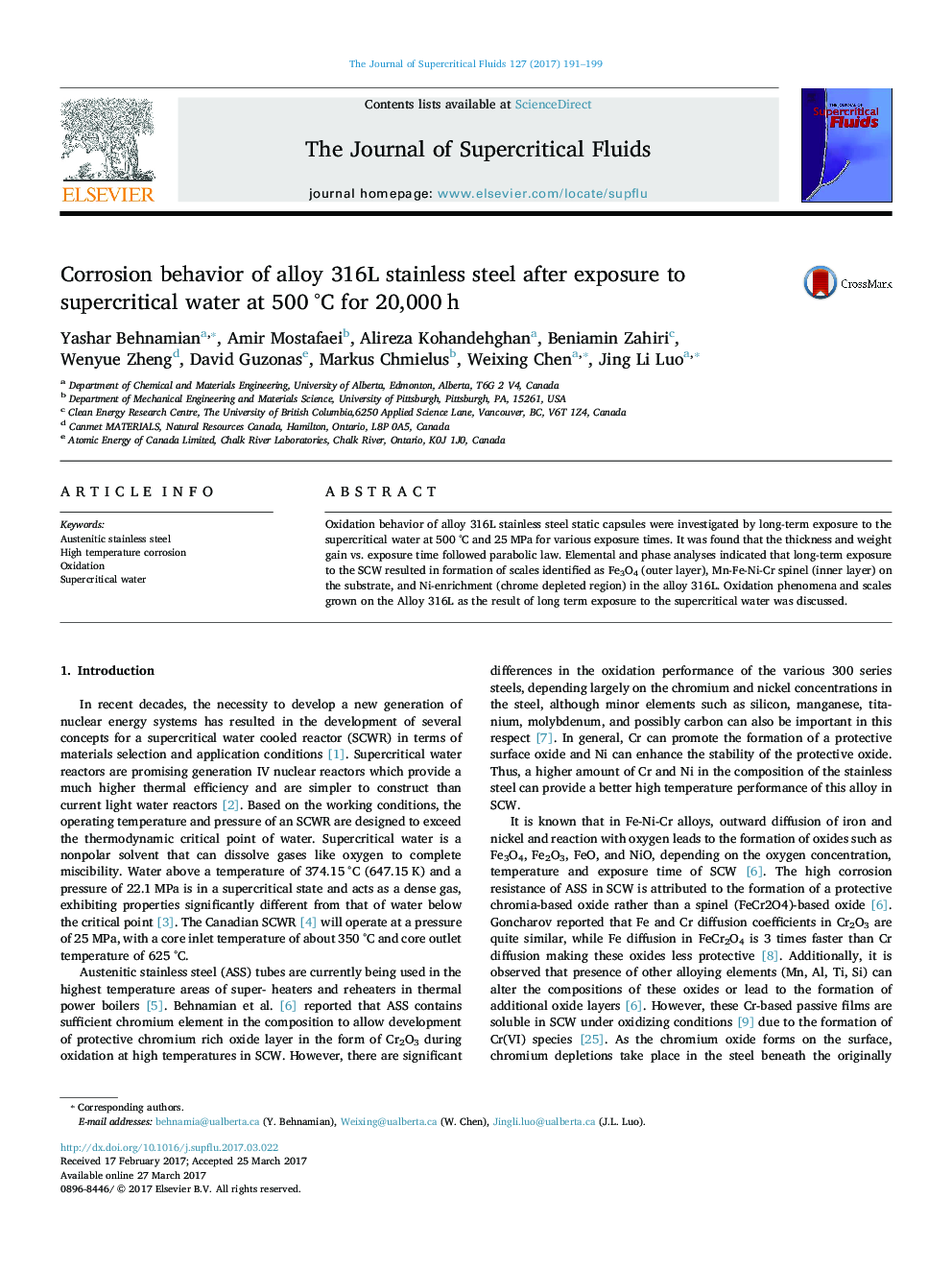| کد مقاله | کد نشریه | سال انتشار | مقاله انگلیسی | نسخه تمام متن |
|---|---|---|---|---|
| 4909627 | 1427349 | 2017 | 9 صفحه PDF | دانلود رایگان |

- Oxidation of alloy 316L stainless steel in supercritical water (500 °C/25 MPa).
- The layer thickness and weight gain vs. exposure time followed parabolic law.
- Fe3O4 (outer layer), (Fe,Ni)Cr2O4/(Mn,Cr)2O3 (inner layer) on the substrate.
- Ni and Mo elements are segregated by the selective oxidation of Cr.
- Oxidation mechanism was discussed based on the obtained results.
Oxidation behavior of alloy 316L stainless steel static capsules were investigated by long-term exposure to the supercritical water at 500 °C and 25 MPa for various exposure times. It was found that the thickness and weight gain vs. exposure time followed parabolic law. Elemental and phase analyses indicated that long-term exposure to the SCW resulted in formation of scales identified as Fe3O4 (outer layer), Mn-Fe-Ni-Cr spinel (inner layer) on the substrate, and Ni-enrichment (chrome depleted region) in the alloy 316L. Oxidation phenomena and scales grown on the Alloy 316L as the result of long term exposure to the supercritical water was discussed.
226
Journal: The Journal of Supercritical Fluids - Volume 127, September 2017, Pages 191-199